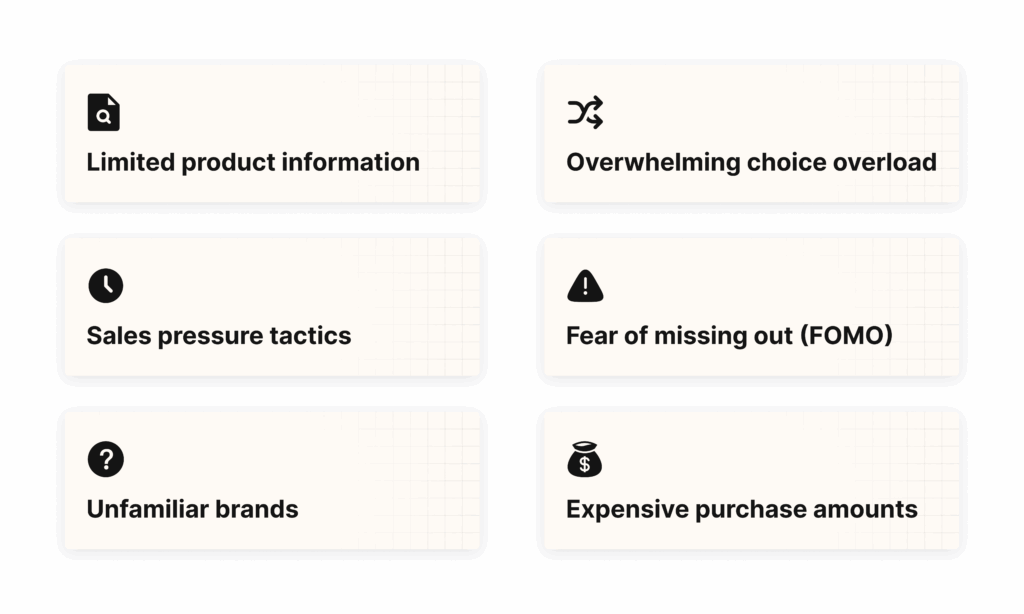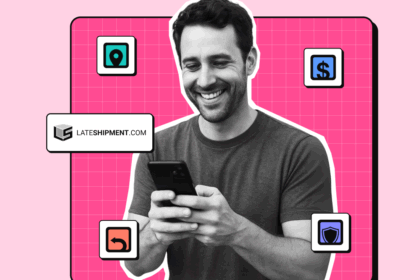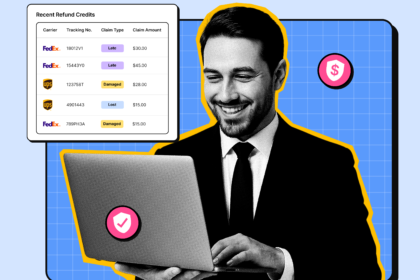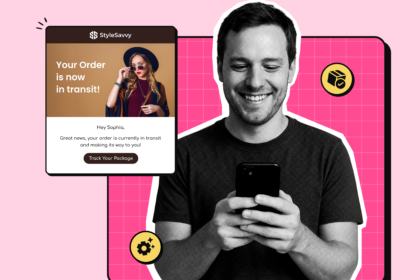Ever bought something online, only to feel a pang of regret minutes later? That sinking feeling when you wonder if you just made a mistake, overpaid, or could have found something better elsewhere?
You’re not alone. Buyer’s remorse is one of the most common experiences in the consumer journey, yet it’s also one of the most preventable. This anxiety stems from emotional drivers like uncertainty and the aftermath of impulsive decisions. Here’s the thing: understanding the psychology behind post-purchase regret gives brands a powerful opportunity to transform hesitation into lasting loyalty.
What Buyer's Remorse Really Is
Buyer’s remorse is that nagging regret or anxiety that hits after making a purchase. It’s your brain second-guessing a decision you’ve already committed to, and it happens more often than you’d think.
Why should brands care? Because remorse directly impacts customer experience, tanks repeat purchase intent, and drive up return rates. When customers feel uncertain about their purchase, they’re less likely to buy from you again and more likely to share negative experiences.
The psychology here is fascinating. It’s called cognitive dissonance — your mind’s desperate need for consistency between your decision and the outcome. When doubt creeps in, your brain works overtime trying to resolve that mental conflict. Unfortunately, regret often wins.
Why Buyer's Remorse Happens
Buyer’s remorse isn’t just random anxiety, it’s a predictable response to the uncertainty gap that opens up after any purchase decision. The moment you click “buy,” you shift from being in control to being dependent on the seller. Several factors make this remorse almost inevitable.

- Limited product information — Customers make decisions with incomplete knowledge, then worry they missed crucial details
- Overwhelming choice overload — Too many options online create decision paralysis and second-guessing
- Sales pressure tactics — Urgency-driven messaging (“Limited time offer!”) can push buyers into hasty decisions they later question
- Fear of missing out (FOMO) — Social proof and scarcity marketing trigger impulsive purchases that don’t align with actual needs
- Unfamiliar brands — Less brand trust means higher anxiety about product quality and customer service
- Expensive purchase amounts — Higher financial commitment naturally amplifies doubt and the need for validation
The bigger the purchase or the less familiar you are with the brand, the wider that uncertainty gap becomes.
The Four Faces of Buyer's Remorse
Not all remorse is created equal. Let’s break it down:
Financial Remorse happens when buyers worry they spent too much. This is especially common after impulsive purchases or big-ticket items. The buyer starts calculating what else they could have done with that money.
Product Remorse kicks in when doubts surface about quality, features, or whether the item will actually meet their needs. “Will this really work for me?”
Opportunity Cost Remorse is that gnawing feeling that a better deal or superior alternative was missed. “I bet I could have found this cheaper somewhere else.”
Timing Remorse occurs when buyers question whether their purchase was premature or unnecessary. “Did I really need this right now?”
Here’s a sobering reality: studies show up to 80% of online buyers experience some level of post-purchase anxiety. That’s a massive opportunity for brands willing to address it head-on.
Targeting Remorse at Its Source
Each type of buyer’s doubt demands its own strategic response. When customers worry about spending too much, brands need to immediately reinforce value through purchase confirmations that highlight quality, benefits, and long-term ROI.
For those questioning whether the product will actually work for them, the solution lies in proactive onboarding. Detailed tutorials, demonstration videos, and customer success stories that build confidence in their choice. When buyers fear they missed a better deal elsewhere, brands can deploy price match guarantees, comparative analysis, and exclusive perks that prove they made the smart choice.
For customers questioning their purchase timing, smart brands reinforce the original urgency or need that drove the decision, highlight immediate benefits they can start enjoying, and provide flexible return policies when timing concerns are genuine.
The key insight here is that generic reassurance doesn’t work. Successful brands diagnose the specific doubt their customers experience and deploy targeted solutions that address the root psychological trigger rather than surface-level anxiety.
Flipping the Script: Post-Purchase as Opportunity
What this really means is that the post-purchase stage isn’t the end of your customer journey, it’s your chance to reinforce and validate the buyer’s decision. Think of remorse as your brand’s moment of truth. Consistent, reassuring communication during this critical window can eliminate uncertainty and turn anxious buyers into confident advocates. The key is being proactive rather than reactive.

LateShipment.com turns post-purchase silence into a confidence-building conversation. Our real-time notifications reassure customers at every step, turning the wait from anxious uncertainty into positive anticipation.

Predictive exception alerts let brands notify shoppers about delays or issues before they even notice, with ready-to-go solutions that protect trust. With our branded tracking pages and seamless exchange-first returns experience, retailers turn routine status checks into loyalty-building moments complete with personalized messaging and upsell opportunities that validate the shopper’s decision and encourage repeat purchases.
From Second-Guessing to Satisfaction
Buyer’s remorse isn’t inevitable, it’s preventable when brands take control of the post-purchase experience. The psychology is clear: customers need reassurance, transparency, and proactive communication during those critical post-purchase moments.
The brands that master this transformation don’t just reduce returns and complaints. They turn potentially anxious customers into confident advocates who buy again and recommend to others.
Turn second-guessing into satisfaction, and watch remorse turn into repeat business.












